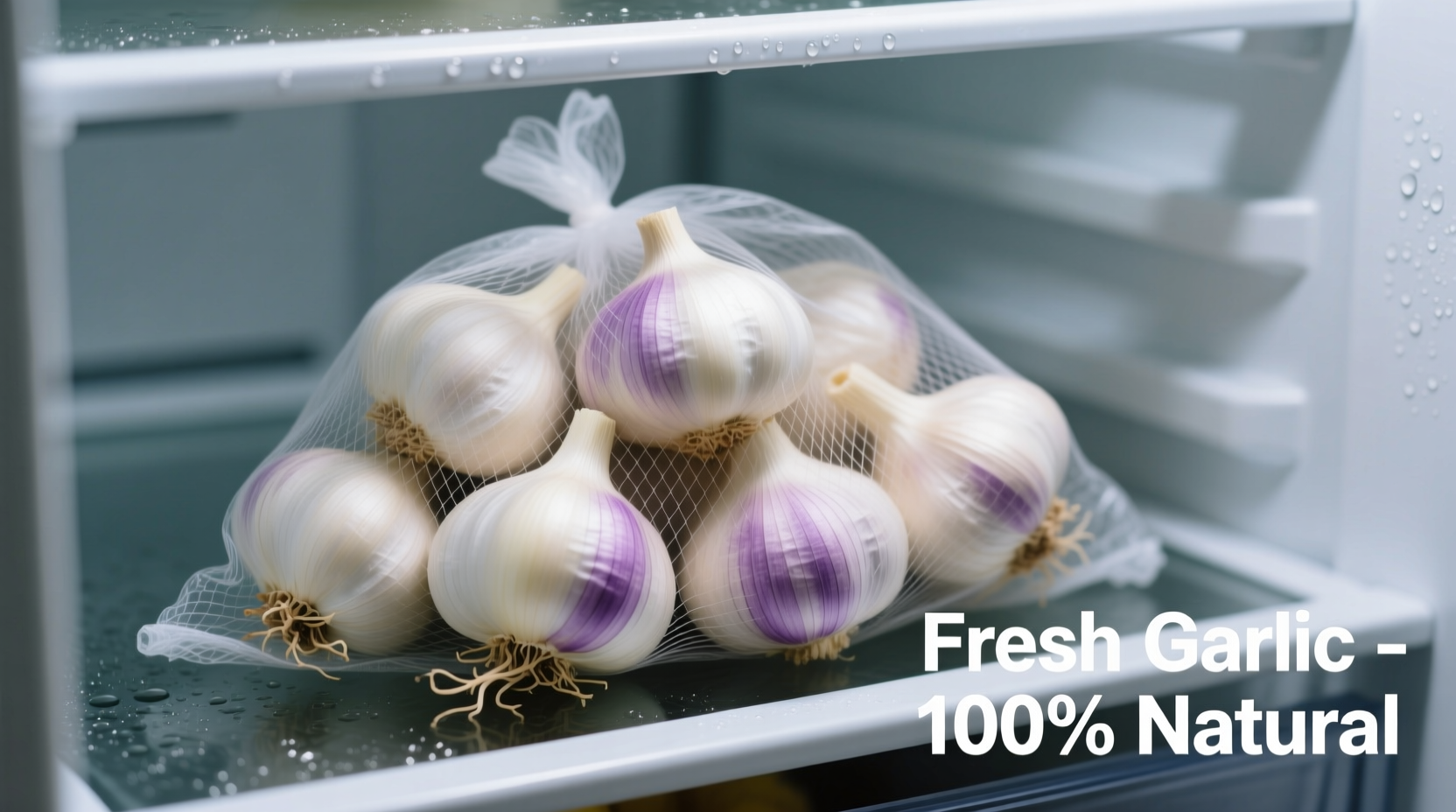Whole garlic bulbs stay fresh in the refrigerator for 3-5 months when stored properly in a mesh bag or ventilated container. Individual cloves last 2-3 weeks, while minced or chopped garlic remains safe to eat for only 5-7 days. Discard garlic immediately if you notice mold, brown spots, green sprouts, or a sour smell—these indicate spoilage that could cause foodborne illness.
Garlic transforms ordinary dishes into culinary masterpieces, but nothing ruins a recipe faster than discovering your garlic has gone bad. Understanding how long garlic stays fresh in the refrigerator prevents food waste while keeping your family safe from potential foodborne illnesses. This guide delivers science-backed storage timelines you can trust, plus visual indicators that help you determine when garlic has passed its prime.
Why Garlic Storage Matters More Than You Think
Improperly stored garlic doesn't just lose flavor—it becomes a potential health hazard. The USDA's Food Safety and Inspection Service confirms that improperly stored garlic creates conditions where Clostridium botulinum bacteria can thrive, particularly when combined with oil. This guide separates food safety facts from common kitchen myths, helping you maximize freshness while minimizing risk.
Garlic Shelf Life: The Complete Refrigeration Timeline
Your refrigerator's consistent cool temperature significantly extends garlic's lifespan compared to room temperature storage. However, different garlic forms have varying shelf lives. Here's what food science research reveals about how long garlic lasts in the fridge under optimal conditions:
| Garlic Form | Refrigerator Shelf Life | Storage Method |
|---|---|---|
| Whole bulb (unpeeled) | 3-5 months | Cool, dark place in mesh bag |
| Individual cloves (unpeeled) | 2-3 weeks | Airtight container in crisper drawer |
| Minced/chopped garlic | 5-7 days | Airtight container with oil layer |
| Roasted garlic | 7-10 days | Airtight container with cooking liquid |
| Garlic in oil (homemade) | 4 days max | Refrigerated in clean container |
This timeline comes from research conducted by the National Center for Home Food Preservation at the University of Georgia, which has studied vegetable storage safety for over two decades. Their findings confirm that whole garlic bulbs maintain quality significantly longer than processed forms due to their protective papery skin.
Spotting Spoiled Garlic: Your Visual Safety Checklist
Before using refrigerated garlic, perform this quick visual inspection. The FDA Food Code emphasizes that sensory evaluation remains the most reliable method for determining food safety at home:
- Mold presence – Any fuzzy white, green, or black growth means immediate discard
- Brown or yellow spots – Indicates advanced spoilage beyond surface level
- Green sprouts – While technically edible, sprouted garlic has diminished flavor
- Soft or mushy texture – Fresh garlic should feel firm when squeezed
- Sour or unpleasant odor – Garlic should smell pungent but clean, not fermented
When determining how long garlic remains good in the fridge, remember that these visual indicators matter more than calendar dates. Temperature fluctuations in your refrigerator can accelerate spoilage, making visual checks essential.

Maximizing Garlic Freshness: Proven Storage Techniques
Professional chefs and food scientists agree that proper storage technique dramatically impacts how long garlic stays fresh in the refrigerator. Follow these evidence-based methods:
Airflow Is Critical
Unlike most vegetables, garlic requires ventilation to prevent moisture buildup. The University of California Davis Food Science Department recommends storing whole bulbs in mesh bags or loosely woven baskets rather than sealed plastic. This allows air circulation while maintaining cool temperatures.
Separate from Moisture Sources
Store garlic away from high-moisture foods like lettuce or tomatoes. The USDA notes that excess humidity triggers premature sprouting and mold growth. Keep garlic in your refrigerator's crisper drawer with humidity control set to low.
Processed Garlic Needs Special Handling
Once you've peeled or chopped garlic, its shelf life decreases dramatically. For minced garlic, the National Center for Home Food Preservation recommends covering it completely with olive oil in an airtight container. The oil creates a barrier against bacteria while preserving flavor. Change the oil every two days to maintain freshness.
Avoiding Common Garlic Storage Mistakes
Even experienced cooks make these critical errors that shorten garlic's refrigerator lifespan:
- Storing in sealed plastic bags – Traps moisture leading to mold
- Keeping near heat sources – Refrigerator doors experience temperature fluctuations
- Washing before storage – Adds excess moisture that accelerates spoilage
- Storing garlic in oil at room temperature – Creates botulism risk
Food safety experts consistently warn against the popular practice of storing homemade garlic-infused oil at room temperature. The FDA explicitly states that garlic-in-oil mixtures must remain refrigerated and consumed within four days to prevent potential botulism poisoning.
When Freezing Extends Garlic's Usability
For long-term storage beyond refrigerator capabilities, freezing provides a safe alternative. According to research from the National Center for Home Food Preservation:
- Whole unpeeled cloves freeze well for up to 12 months
- Chopped garlic freezes optimally in ice cube trays covered with oil
- Roasted garlic puree maintains quality for 6 months when frozen
Freezing stops enzymatic activity that causes spoilage, effectively pausing the clock on how long garlic remains good. Thaw frozen garlic in the refrigerator before use for best results.
Garlic Safety: When to Definitely Discard
When evaluating how long garlic stays good in the refrigerator, err on the side of caution with these non-negotiable discard rules:
- Any visible mold growth (even small spots)
- Garlic stored in oil beyond four days
- Significant discoloration beyond normal browning
- Unpleasant sour or fermented odor
- Garlic that feels slimy or excessively soft
The USDA Food Safety and Inspection Service emphasizes that when in doubt, throw it out. Consuming spoiled garlic risks foodborne illness that outweighs any potential savings from using questionable ingredients.











 浙公网安备
33010002000092号
浙公网安备
33010002000092号 浙B2-20120091-4
浙B2-20120091-4